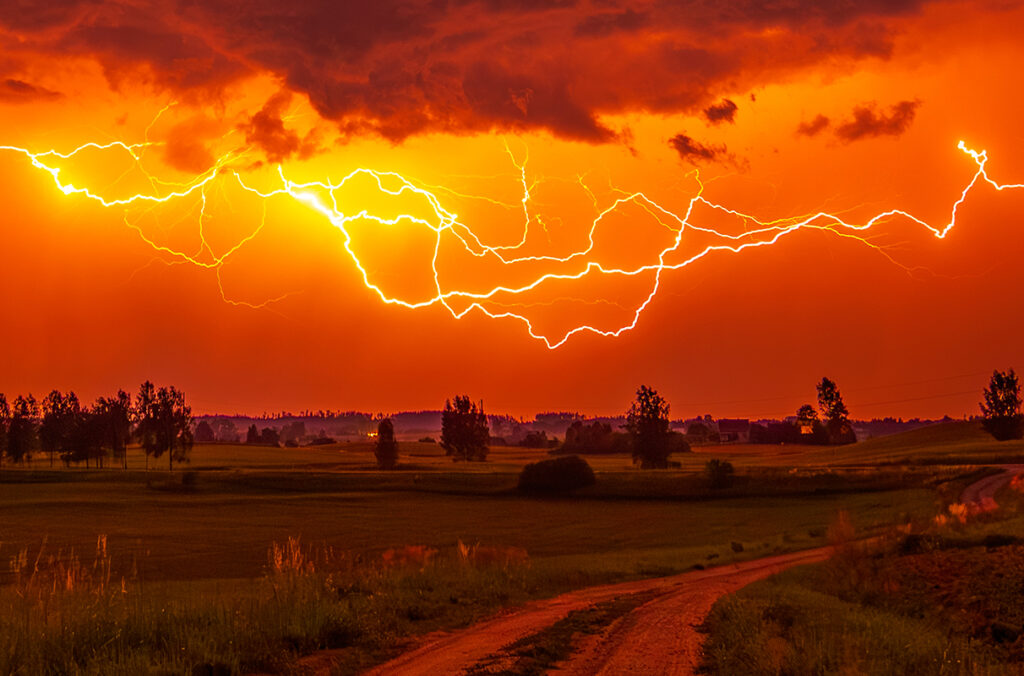
The Northwest United States is bracing for a significant increase in cloud-to-ground lightning days in the coming years, accompanied by an elevated risk of wildfires. This alarming projection is based on a new study utilizing a unique machine-learning approach developed at Washington State University (WSU). The study, published in the journal Earth’s Future, provides detailed forecasts for lightning activity across the Western U.S. by the mid-21st century.
According to the study, the most pronounced changes in lightning frequency are expected in parts of Idaho, Washington, and Oregon. Some areas in the Rocky Mountains could experience an additional four to twelve lightning days per year. Researchers have also linked these lightning projections with future wildfire risks, revealing a clear trend: a heightened risk of lightning-induced wildfires across 98% of Western lands prone to fire.
Implications for the Northwest
“The Northwest is emerging, in this study as well as in others, as the region where fire- and fire-related hazards are likely to increase substantially more than in other parts of the western U.S.,” said Deepti Singh, an associate professor in the School of the Environment at WSU Vancouver and co-author of the paper.
The study underscores the urgent need for forest management strategies aimed at mitigating wildfire risks and preparing vulnerable communities for potential fires. As the planet continues to warm, wildfires are expected to grow in both size and severity. Currently, lightning accounts for more than two-thirds of the acreage burned in wildfires across the West. However, global climate models have struggled to simulate future lightning activity due to their coarse geographic resolutions.
“There are already a lot of studies that say future wildfire activity will increase in the Western U.S. and that’s without even considering potential lightning increasing, which we’re showing is going to happen in many areas,” said Dmitri Kalashnikov, lead author of the paper.
Advanced Machine-Learning Models
The innovative machine-learning models developed in this study offer the most detailed projections yet of future lightning patterns and the associated fire risks across the West. Dmitri Kalashnikov, who led the project while completing his PhD at WSU and is now a post-doctoral fellow at the University of California, Merced, spearheaded the use of a convolutional neural network technique. This approach allowed for targeted lightning projections at finer geographic scales than previous studies.
Kalashnikov and his team applied neural network-based predictive models to each 1-degree by 1-degree grid cell across the Western U.S., an area roughly 69 miles on each side. This method enabled the researchers to zoom in on specific regions and make precise predictions about future lightning activity.
“Instead of developing one model to predict lightning everywhere, we really went in on a finer scale to predict lightning at each 1-degree box,” Kalashnikov explained.
The models were trained using data from three key meteorological variables conducive to lightning, collected from the summers of 1995-2022. This data was instrumental in making mid-century projections.
Regional Variations and Future Outlook
The study’s findings indicate that while an increase in lightning days does not directly equate to a proportional increase in fire risk, the overall risk is influenced by factors such as temperature, rainfall, wind, and vegetation dryness. For instance, the Rockies are expected to see an increase of three or more days with a high likelihood of lightning-caused fires by the mid-21st century, despite a larger overall increase in lightning days.
Conversely, parts of Utah and Arizona may experience a reduction in lightning days but an increase in potential lightning-caused fire days due to higher overall wildfire risk. The Southwest generally showed fewer projected increases in lightning days, with some areas even expecting declines. However, the region is still anticipated to face a rise in days with a likelihood of wildfires ignited by lightning.
This development follows a broader trend of increasing wildfire activity in the Western U.S., emphasizing the need for proactive measures to address the growing threat. The study’s projections for the near-term future, spanning 2031 to 2060, highlight the urgency of these efforts as this period is rapidly approaching.
As the Northwest and other regions prepare for these challenges, the study’s insights into future lightning and wildfire risks will be crucial for informing policy decisions and enhancing community resilience in the face of climate change.





